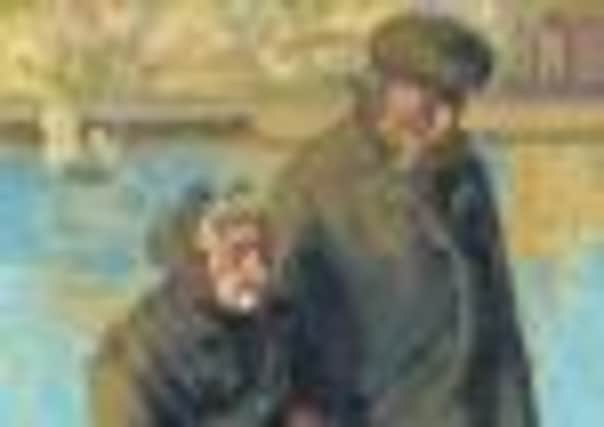Captain’s safe harbour


Crime writer Patricia Cornwell, for one, was convinced that Sickert was responsible for killing and mutilating at least six prostitutes in the East End of London in late 1888 and spent a fortune trying to prove it, arguing that many of his pictures resembled Ripper crime scenes. Sickert also painted a series based on the gruesome murder of Camden Town prostitute Emily Dimmock in 1907.
Now a further riddle – one with a distinctly Yorkshire flavour – has emerged to envelop Sickert, regarded by some as the greatest British painter between JMW Turner and Francis Bacon.
Advertisement
Hide AdAdvertisement
Hide AdA long-lost painting, neither catalogued, exhibited or referred to for 80 years, emerged in Edinburgh to the amazement of Sickert scholars, including Wendy Baron, whose book, Sickert Paintings and Drawings, is regarded as the definitive work on the artist.
It bore no title but a label on the back shows it was exhibited in Bradford in 1930. Jill Iredale, museums officer at the Bradford 1 Gallery, told Dr Baron that Sickert exhibited only one painting in the city in 1930 – The Blind Sea Captain, which had been loaned by noted collector Sir Cyril Kendall Butler. Now, under that title, the previously unknown picture has sold for £48,000 at Bonhams in London.
In 1913, Sickert wrote to a friend that he had decided to hold over completion of the blind sailor and it seemed – until the Edinburgh discovery – that the sum of his work on the subject rested with an unfinished 1912 canvas known as The Old Soldier.
Dr Baron, writing in the spring edition of Bonhams Magazine, says that given Sickert’s playful indifference to titles, the change of service from navy to army was of little importance.
Advertisement
Hide AdAdvertisement
Hide AdIn 1964, The Old Soldier had been given as a 70th birthday present to Bradford’s famous literary son JB Priestley, an avid Sickert admirer, by his literary agent AD Peters.
The history of that work is known – but not so that of The Blind Sea Captain. Says Dr Baron: “When and why did Sickert decide to resume work on this uncharacteristic subject? The question remains about why this major painting vanished for so long from the Sickert canon. Having briefly re-emerged in 1930 it went back into hiding to resurface 80 years later as an addition to Sickert’s oeuvre which contributes enormously to our understanding of his art.”